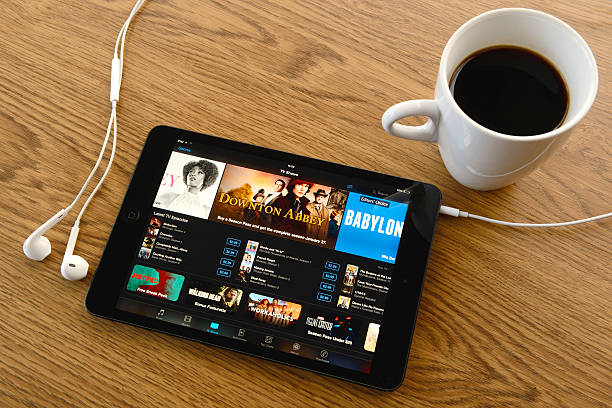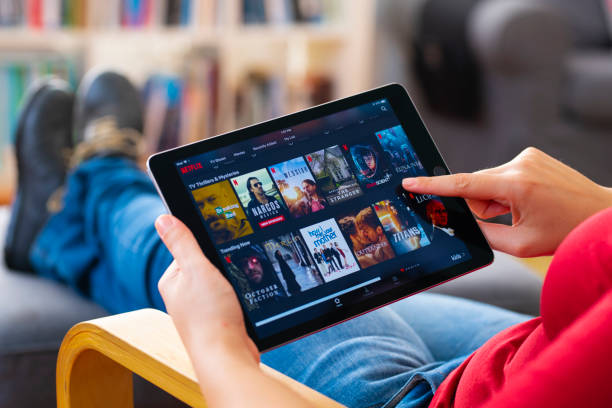Impact of Virtual Reality on Movies and TV Shows
Having become an essential part of advanced technologies, VR entered several fields a while ago, and, in some of them, the most significant transformations are notable. It is revolutionizing the techniques of producing movies/TV shows and the ways audiences consume them. After solely improving the experience of the viewer, VR has also recast how stories are to be told and how they are to be implemented into the field as well. In this article we will attempt to explain what the system Impact of Virtual Reality on Movies and TV Shows is, present some of its benefits, point out today’s problems, and discuss development possibilities.
Physical OR Virtual: Learning through Virtual Reality & Entertainment.
The impact of virtual reality on movies and TV shows is vast, which signals new opportunities for both the filmmakers and for viewers. Altogether it is a fantastic time for the entertainment industry because this technology is actively developing and opening up new opportunities for the future of visual art.
This paper focuses on explaining how virtual reality is enhancing slow-motion impacts on movie markets.

Enhanced Visual Storytelling
Earlier, cinematography employed object-like films and TV shows that are confined to the planes of the screen in which they are placed. However, VR provides the filmmakers the room, which is of a three-dimensional nature, to assist in other forms of narrative. This has made it possible for directors to be more perceptive than they were earlier, thereby giving a better dimension and verity to it.
Virtual Sets and Locations
The other major impact of virtual reality on movies and TV shows is the potential for generating virtual sets and environments. Page layout and customization were time-consuming in the past; for example, constructing a giant, elaborate set in the studio or shooting in some deserted area. Here, all the constraints that may be inherent in other modeling of these processes are completely eliminated by the use of VR. Previously, directors were hamstrung in their ability to construct multi-location stories as they had to think in terms of what was possible on location, but now virtual set extension is entirely believable new worlds.
Impact of virtual reality in the perception of a viewer
Immersion and Engagement
The first of these is depth, which I think is the most obvious way by which virtual reality is going to revolutionize movies and TV shows. In contrast to many other movies, which individuals directly watch on the standard screen in the comfort of their homes, virtual reality pushes the watchers right into the heart of the event. That sort of input creates an understanding as the viewer is made to feel as if they are physically in that world, moving around characters and physically touching the environment.
For example, through VR the viewers are able to actively participate in the change of the plot or even a result. This leads to a drastically different type of product—the interactive motion picture or TV production that prescribes a more active role for the observer/participant.
The start of virtual reality films
While VR is still not used excessively in films and programs, there is already a clear tendency for movies and television series produced for VR. These productions utilize what VR offers best, that is, the 360 camera shots, the interactivity, and the stereophonic sound, wherein the viewers are transported from one room to another.
Despite that, ATFR, films, and series turn into VR-centered TV series for movies in the VR generation. Therefore, VR films in particular can turn into the new kind of cinema that will allow the spectator to receive material through an entirely different model.
Challenges and Considerations
Success requires the impact of virtual reality on movies and TV shows, but it goes along with successes in its own special way.
Cost and Accessibility
One big problem that happened while creating and applying virtual reality to films and movies, as well as broadcast media, is that it is expensive. Therefore, for creating VR content, certain equipment that are required are the 360-degree camera, the motion-capturing tool, and the VR headset. These technologies can also be relatively expensive, and therefore, VR films and TV shows are produced more expensively as compared to the regular media.
Besides, VR hardware devices are available to the public in very few examples. This means that even though technology is improving and therefore cost can be expected to be a minor factor as time goes on, VR headsets are still a rather expensive product to most individuals. This is particularly true if or until the said VR technology is made available to the general public; this might not exert much impact on the former in the intended motion pictures and television programs.
Potential for Motion Sickness
So, some people have motion sickness or are uncomfortable with VR, for example, to watch a long VR event. This is the state where the sight information availed through the VR headset does not match the movement of the perceiver. It is better that the filmmaker should pay attention to this issue while creating VR content so that the comfort of the viewers and the flow & stages of the VR may fall in the right order.
Turning our gaze to Movies and TV Shows, Future of VR
To an extent that there is advancement in technology, the potential of virtual reality in the movies and television programs is limitless. Far more advanced experiences are expected in the future, extending from the visual quality and long-lasting motion capture alongside artificial intelligence in making the environment more or less sensitive.
The possibilities of future entertainment VR also includes actual, real-life, lived VR movies, like theater shows, or even real-life walking into movies or some TV show and interacting with real live people even supposed to be in the movie. This could significantly alter the ways in which the society engages with media and thus design or develop nearly replicas of this world.

Conclusions about Impact of Virtual Reality on Movies and TV Shows
The impact of virtual reality on movies and TV shows, naturally, is profound, which raises volunteering screen artists and spectators’ opportunities manifold. Referring to entertainment, VR is the chance to start creating one’s individual environments, develop narratives, and build emotions in an audience. There are, of course, the opportunities that should be taken advantage of and the challenges that must be met; however, the future in the sphere of VR in movies and TV shows is considerably promising and filled with new shots at gaining experience.
Thus, as a development of the technology is taking place, one can speak about VR as about conventional media in cinematographic creation and television sequences, for changing the traditions in following a story and amusements.
Some basic questions, including which parts of the day are likely to generate the most positive messages and how many minutes are currently spent per day on average per message type, are beyond the ability of most of the text-based T9 auto-predictive technologies currently available in the market to satisfactorily respond to.
FAQs about Impact of Virtual Reality on Movies and TV Shows
Is VR going to unseat normal cinema as well as television programs?
Nevertheless, new opportunities in VR give the impression of a revolution in entertainment; it is impossible to state that it will render movies and serials useless. Nonetheless, since LIV streaming is already there, we can assume that it will be just an addition of having VR for those people who are ready to devote themselves with minimal distractions. The written word, as well as the videos, will be able to get through since each has a sort of fan.
Can consumers afford to use VR technology?
These gadgets have gradually reduced in cost in the recent past, but the better VR headsets and content are not cheap. From these dimensions, it is predicted that with the advancement of this technology, the supply will also enhance, and most importantly, with affordability for individuals to utilize this technology. It might take another 2 to 3 years more before it will be used as a tool for other entertainment activities.